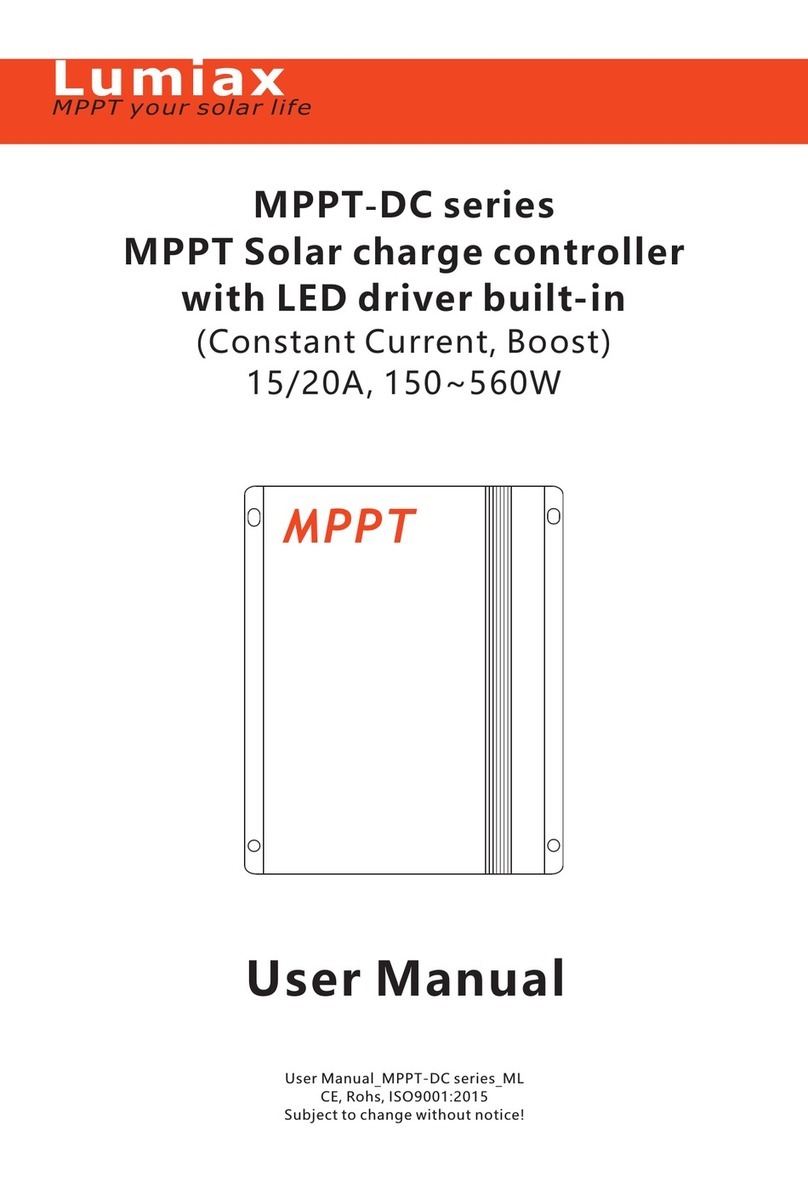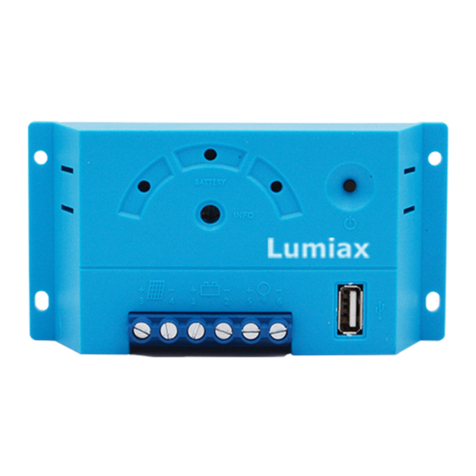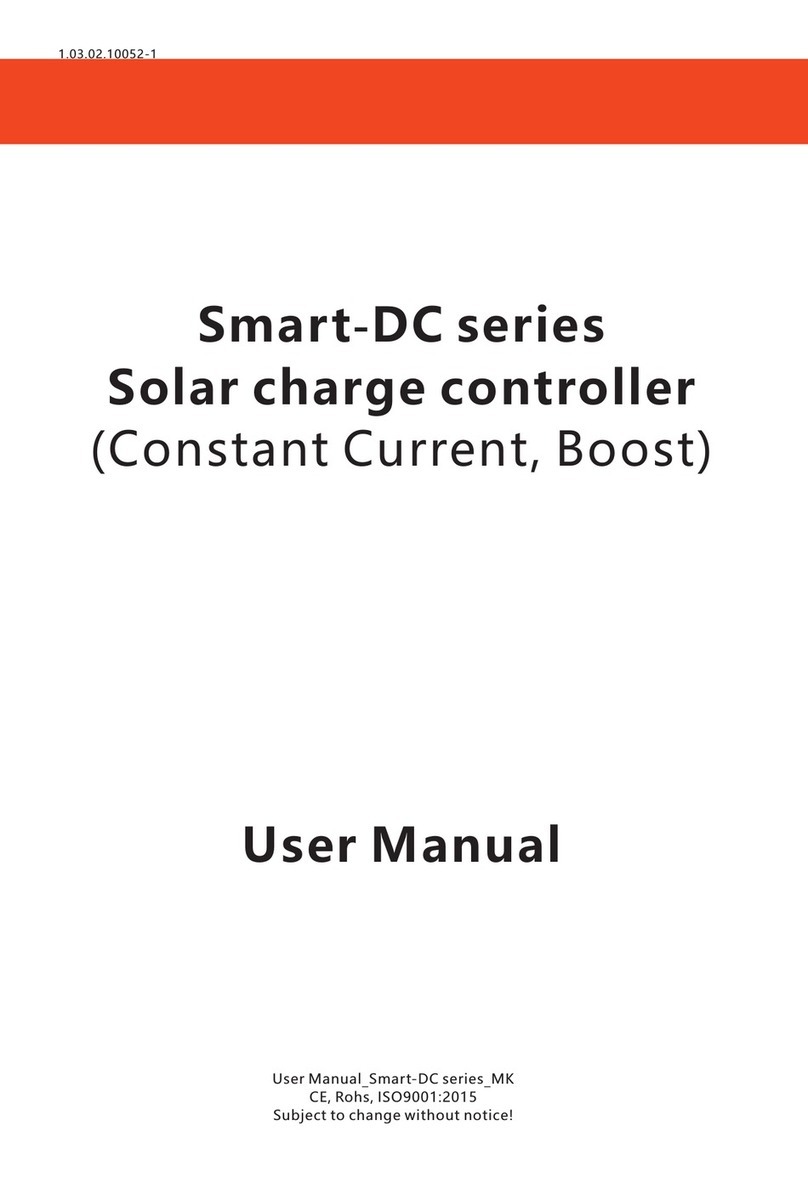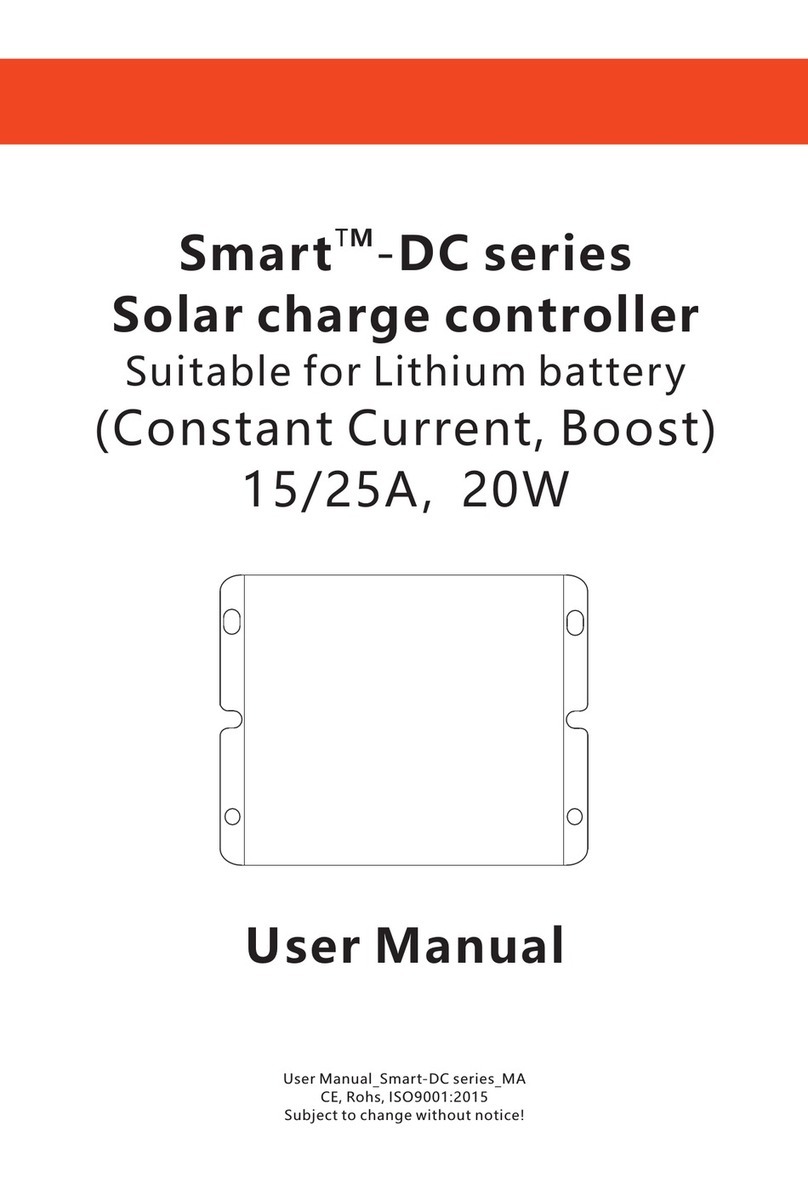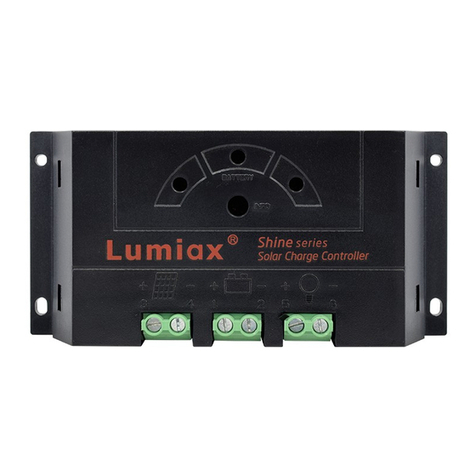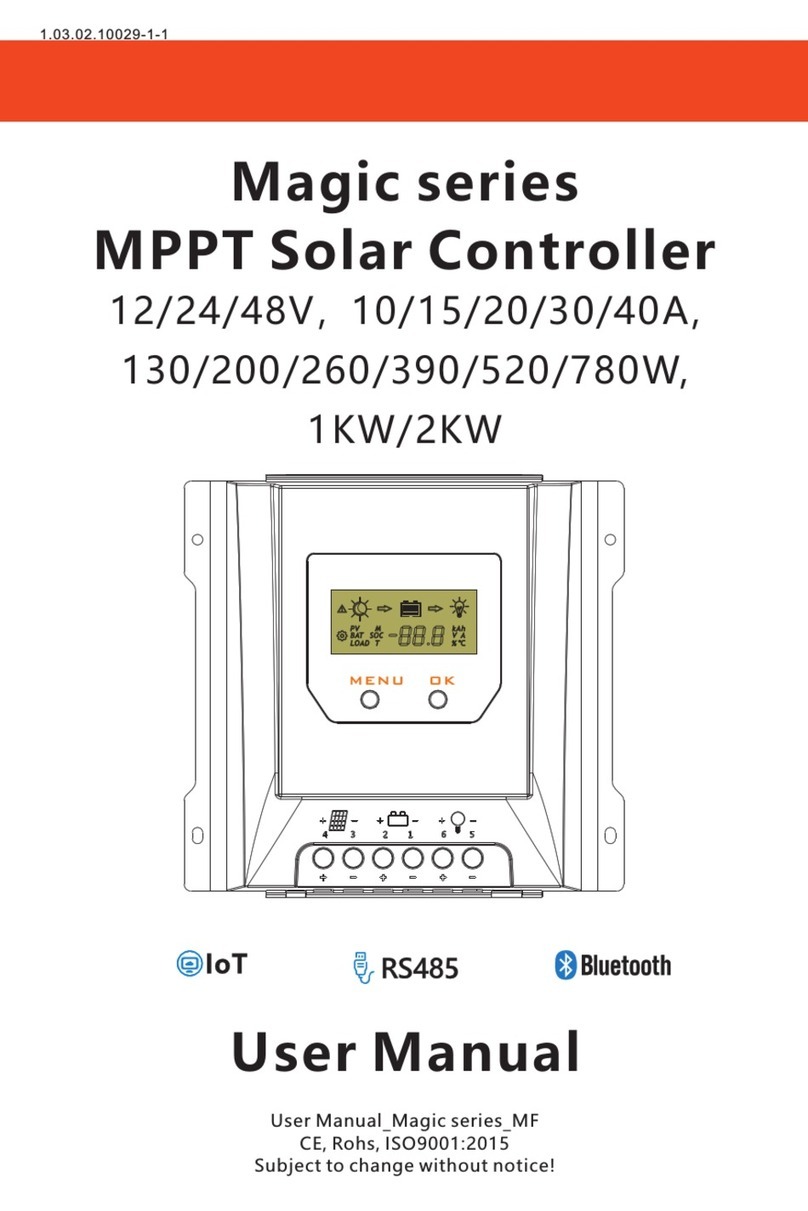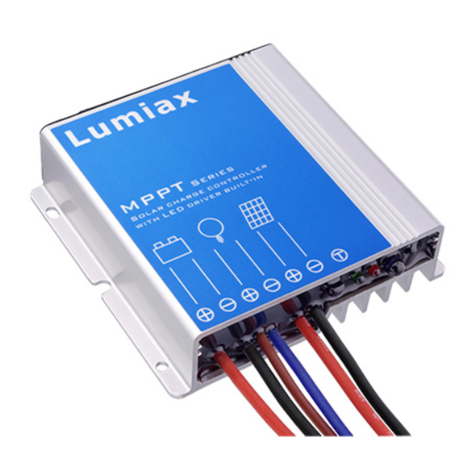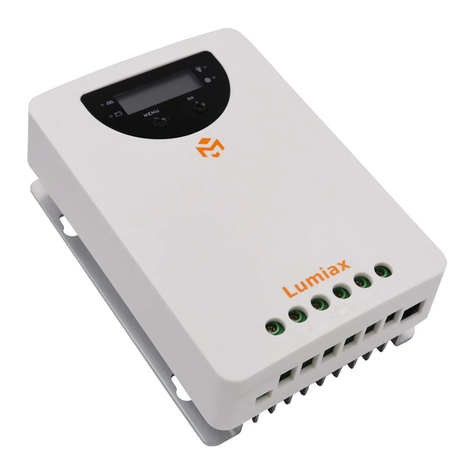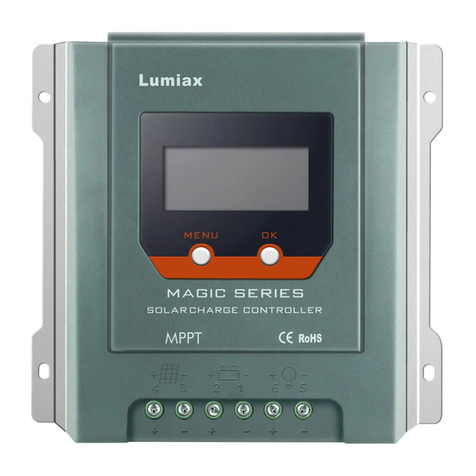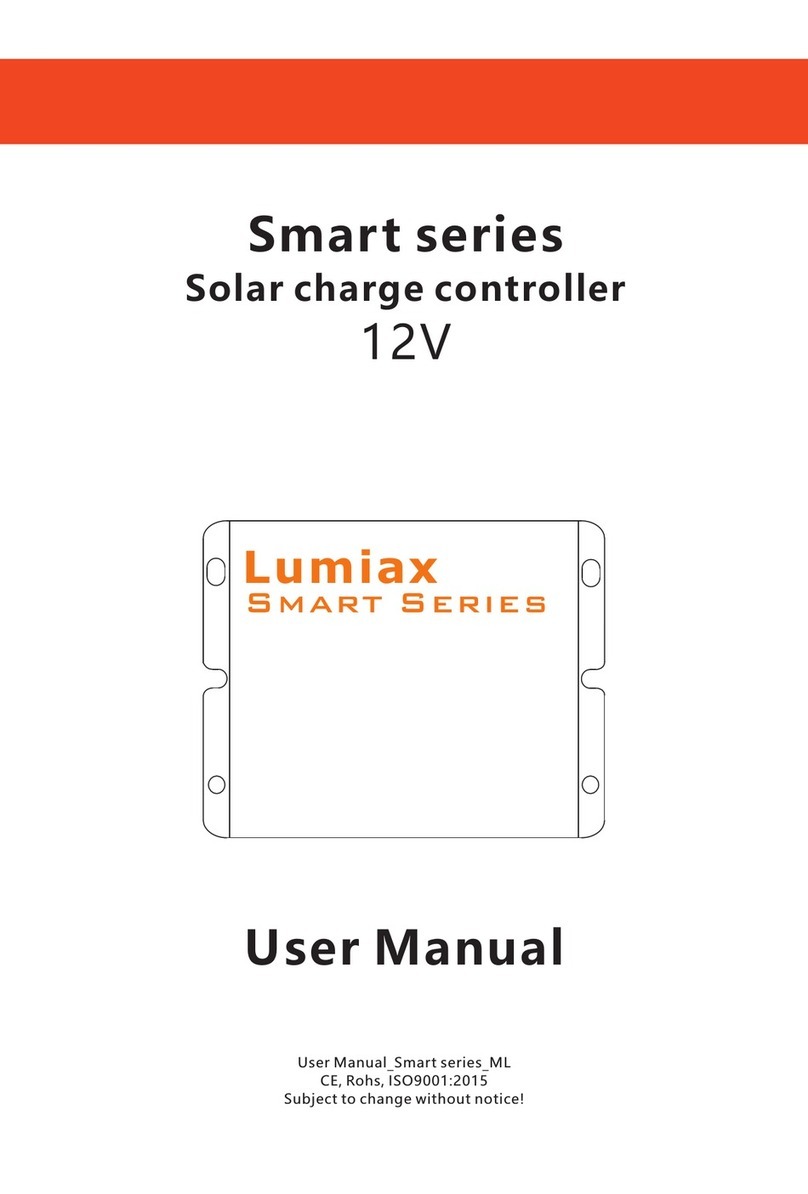
Innovative Max Power Point Tracking(MPPT) technology, tracking efficiency >99.9%
Full digital technology, high charge conversion efficiency up to 98%
LCD display design, read operating data and working condition easily
LCD can display lastest daily/monthly/yearly charging data, total 5 years
12/24/48V automatic recognition
Liquid, Gel, AGM and Lithium battery for selection
The separate ports for remote temperature sensor and voltage sensor, make battery temperature
compensation and voltage detection more accurate
Automatic power reduction when over-temperature
Relay control the switching signals of external loads and chargers for hybrid power supply system
like solar energy with utility electricity or gas generation
Dual automatic restriction function when exceeding rated charging power and charging current
5-year memory battery voltage and historical charging data
Android APP version for Bluetooth communication
IoT wireless or RS485 communication functions optional
Monthly charging data can be calculated and displayed by grouping and graphs
Modbus protocol based on RS485 standard for remote communication need
Multi-functional AUX port can meet customized requirements
Common positive design, suitable for telecom applications
Perfect EMC & thermal design
Full automatic electronic protect function
Magic series solar controller is based on an advanced maximum power point tracking (MPPT)
technology developed, dedicated to the solar system, the controller conversion efficiency up to
98%. The controller can rapidly track the maximum power point(MPP) of PV array to obtain the
maximum energy of the panel, especially in case of a clouded sky, when light intensity is changing
continuously, an ultra fast MPPT controller will improve energy harvest by up to 30% compared to
PWM charge controllers.
The limitation function of the charging power and current, and automatic power reduction
function fully ensure the stability when works with oversize PV modules and operate under high
temperature environment.
2.1 Outstanding features
2.2 MPPT
MPPT profile
The full name of the MPPT is maximum power point tracking. It is an advanced charging way
which could detect the real-time power of the solar Modulel and the maximum point of the I-V
curve that make the highest battery charging efficiency.
Current Boost
Under most conditions, MPPT technology will "boost" the solar charge current.
MPPT Charging:Power Into the controller (Pmax)=Power out of the controller (Pout)
Iin x Vmp= Iout x Vout
* Assuming 100% efficiency. Actually, the losses in wiring and conversion exist.
If the solar module's maximum power voltage (Vmp) is greater than the battery voltage, it follows
that the battery current must be proportionally greater than the solar input current so that input
and output power are balanced. The greater the difference between the Vmp and battery voltage,
the greater the current boost. Current boost can be substantial in systems where the solar array is
of a higher nominal voltage than the battery as described in the next section.
3
2, Product Overview
